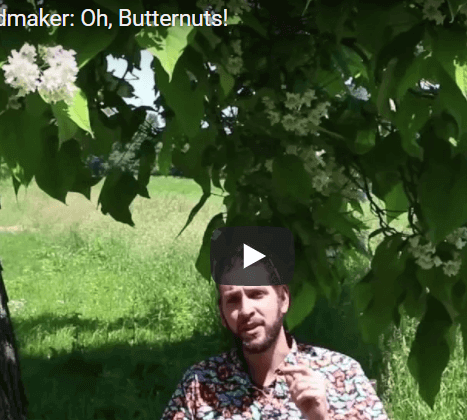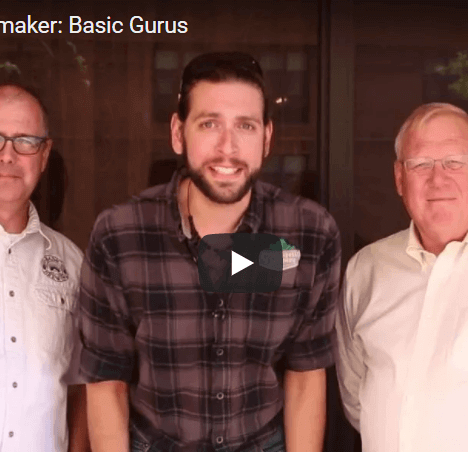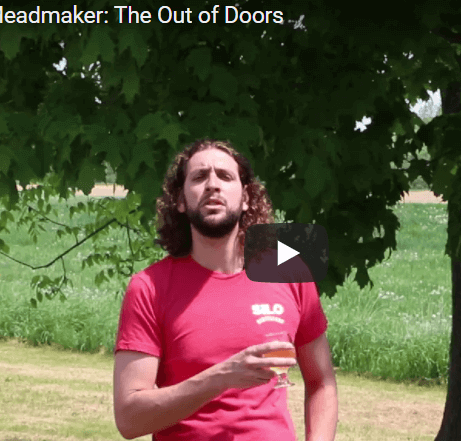In which Ricky the Meadmaker answers questions about final gravity, bulk aging vs. bottle aging, the best way to make a coffeamel, fermenting in plastic water jugs, and more!
Aging: The Secret of the Ages
“Beekeepers” film
Why are the Bees Dying?
How Many Bees Does it Take to Make a Pound of Honey?
Meadmaking Essential Equipment
I'm outside again, under this absolutely enormous tree, the tree is not only enormous, but it is covered in flowers, which is not only pretty, but also really important for bees. We'll discuss more in a moment.
Welcome to Ask the Meadmaker, where I, Ricky the Meadmaker, answer your questions about mead making, mead drinking, mead brewing, and really any question you're willing to send to me.
I'm going to start with an easy one this week. I feel like I deserve it. Drinking outside is quite a burden. Things land in your drink. Anyway, my first question is from Paul. Paul wanted to have a semi-sweet mead and he took a final gravity reading. Your final gravity is how much sugar is left in your fermentation when all is said and done. His final gravity reading was 0.996. And he wanted to know if it was still going to be sweet. Well, to give you an idea, Paul, 1.000 is pure water, meaning that you fermented so much sugar out of solution that the density of ethanol, the density of ethanol being less than the density of water has come into play. If you weigh your glass, it is going to be so free of sugar that it is lighter than a glass of water. So, no, I'm afraid you're not going to have a semi-sweet mead.
Here's a fun one. I've gotten a few questions recently about whether bulk aging, aging in a five-gallon batch or in my case, a 1,000-gallon batch, is different from bottle or can aging a product? The answer is yes. But it shouldn't be, and we don't know why.
All right, here's a question I get all the time that I have never answered before. I don't really have a good answer. But when has that ever stopped me before? People want to know if those big water bottle jugs that they see at the grocery store, Home Depot, or Lowe's are the same as a better bottle, a special type of carboy made out of a high-density polymer designed for fermentation. And the answer is that those big water bottles are not designed for ethanol. And they are not designed to prevent dissolved oxygen, known in the industry as DO. So, the question is, are they safe to ferment in? And the answer is I've certainly done it. But I cannot recommend that you do it at home.
Alright kids, I don't get it. There's this sudden obsession with coffeemels. I've been getting like nine questions a week. YouTube, email, people asking in person. Not that there's anything wrong with this. Coffeemels, coffee meads, are excellent. But it's like 96 ˚F outside here in Vermont, which means it must be hotter everywhere else in America. So, why people's minds are suddenly turning to coffee beverages is beyond me. But that said, the questions generally revolve around how do I get the coffee into my mead? Do I make espresso and pour it in? Do I just throw whole beans in? Is cold brew better? And the answer is, because everyone's taste in coffee is different, there's really no one right way to make a coffeemel. I personally like to age my mead on coffee beans of a roast that I would be happy to drink. A lot of people have gotten success by making cold brew and adding it at multiple stages in the fermentation. The answer is there's one wrong way to make a coffeemel, and that is to take unroasted beans and drop them in. They are known as Quakers and they can ruin an entire batch.
Our last question this week brings me back to this beautiful flowering butternut tree behind me. People have been asking us a lot about pollinator health. How are the bees doing? Colony collapse disorder really hasn't been in the news as much recently, but pollinators, especially wild pollinators, are still not doing great. So, the question is, what can we all do at home? And the answer is, there is one very cool, very easy thing we can do. Modern agriculture is amazing. We feed billions of people with modern agriculture. And yes, there is room for improvement. We don't need to discuss that now. Certainly not here. But there is a problem. Most modern agriculture relies on two things. Plants with a short bloom period (apple trees, almond trees) that blossom for a very short period of time, and then are all ready later in the season. And modern agriculture depends on self-pollinating plants like corn. This means that there are very few flowers in open fields and in farm fields for bees to visit during the summer. So, anything you can do at home, planting trees like a butternut, which blossom later in the season, and even better, if you can designate part of your lawn just for wild flowers, you can do a lot in your own neck of the woods to support pollinator health.
So, that is our last question and the end of our show. No word of the week this week because other Ricky claims he's on vacation. Keep sending your questions. I'll get to them as soon as possible. Cheers.




